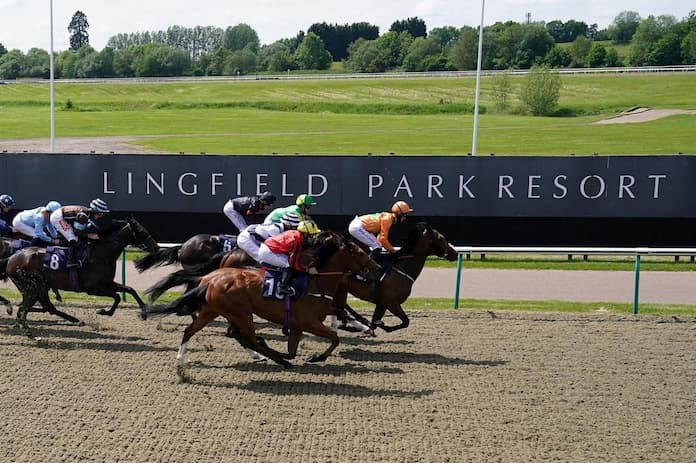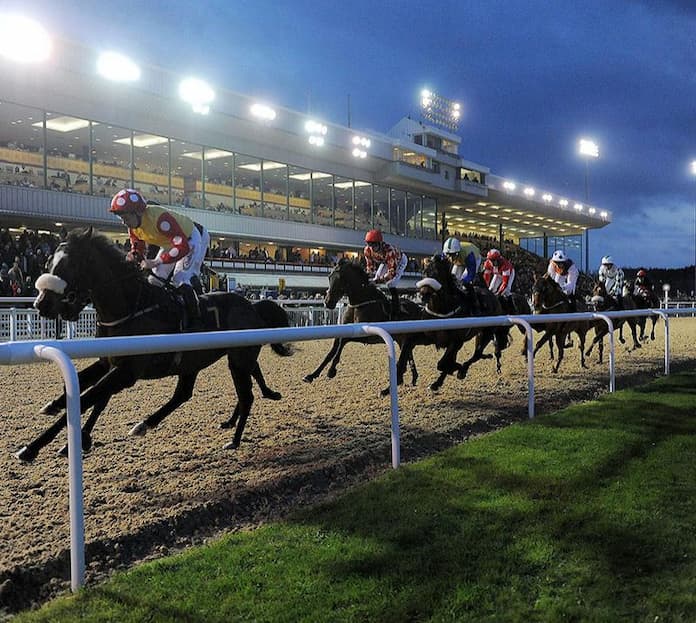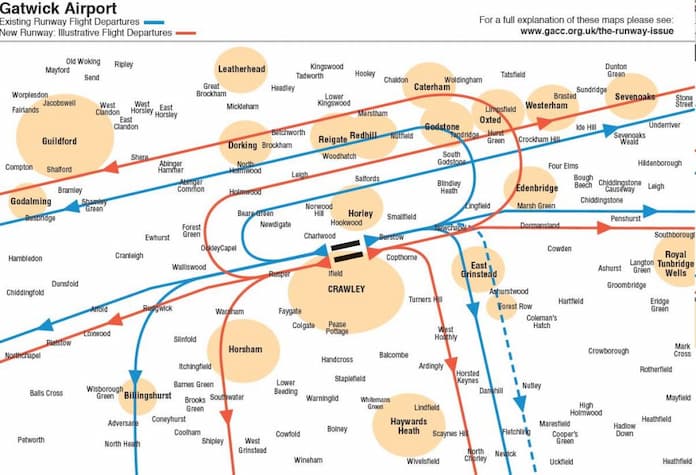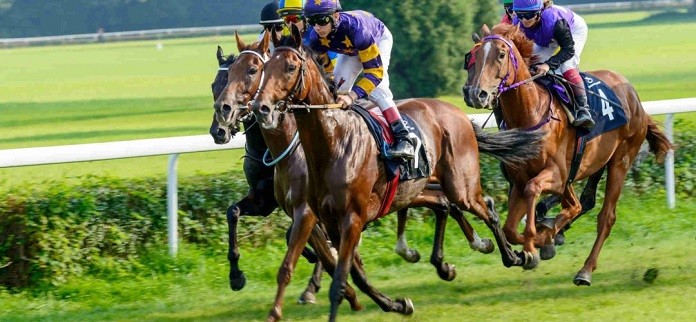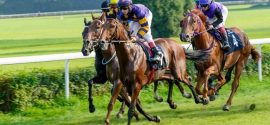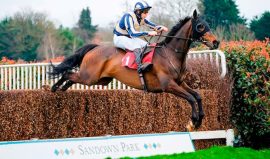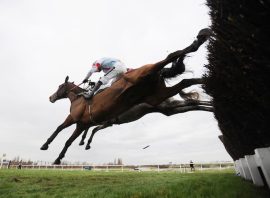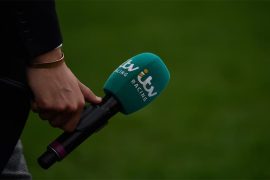In the UK and Ireland there are seven All-Weather horse racing tracks and all-bar-one of these courses have floodlights to provide evening racing during the winter months – except one, Lingfield.
So, why doesn’t the popular Surrey track have any floodlights installed?
UK and Ireland Have Seven All Weather Tracks
There are seven All-Weather horse racing tracks across the UK and Ireland (see below), with all baring Lingfield offering floodlight action. Meaning they can attract racegoers to the evening racing through the winter and autumn months.
UK & Irish All-Weather Horse Racing Courses Listed
Lingfield Park:
Left-handed and situated on the inside of the turf track. It’s 1m2f in length and between the 4-furlong and 2-furlong poles is run downhill. With their first AW meeting staged back in 1989 making it the first AW track in the UK. But the only one WITHOUT floodlights (find out why below).
Southwell:
The second-oldest AW track in the UK, first racing in 1989 – just a week after Lingfield. Originally had a fibresand surface, which was deeper and suited horses that preferred softer ground on the turf. Also had AW jumps racing in the past but has now switched its surface to tapeta in December 2021.
Kempton Park:
Right-handed and transformed in 2006, plus is the only AW track in the UK to run right-handed. Opened in 2006 to run alongside the turf track that was already at the Sunbury-on-Thames venue. Not deemed to be as fast as Lingfield and Wolverhampton, but has floodlights installed which has seen the track race most Wednesday nights through the winter months.
Wolverhampton:
Left-handed AW only track that hosts racing between October and April each year. Floodlights also allow the track to stage evening racing, with Friday night winter dates popular with punters. Wolves also staged the first UK AW floodlight fixture in 2015 (pictured below).
Newcastle:
Left-handed, with the AW course added to the turf course in 2016 – making it the most recent AW tracks in the UK. Hosts the Northumberland Plate on their AW track in June each year and offers floodlight AW racing all year-round.
Chelmsford:
Left-handed and one of the newer AW tracks in the UK – opening in 2015. Unique as has the grandstand in the middle of the track. Another track that offers floodlight racing to attract evening horse racing fans through the year. Only offers AW racing.
Dundalk (Ire):
Left-handed AW track and the only one currently in Ireland. Dundalk used to be a jumps only track but was reopened in 2007 as a Polytrack AW only course. Racing between October and March each year and also offers floodlight evening action.
Why Is There No All-Weather Floodlit Racing At Lingfield?
Lingfield Park staged the first ever All-Weather horse racing fixture in 1989, but they are still the only track that DON’T have floodlights.
Therefore, despite a host of popular summer evening cards when the days are longer, the Surrey track still can’t stage evening racing through the winter months like the other six AW courses in the UK and Ireland.
So, why can’t Lingfield have floodlights installed?
Insert ‘drumroll’ here…….
It’s because the Lingfield Park horse racing track is bang-on the Gatwick airport flight path.
Racing fans at Lingfield will often see low-flying planes coming over the track during an afternoon at the course. With the Surrey venue just seven miles from Gatwick and directly under their flight path.
Therefore, as much as the Lingfield race officials would love to have floodlights at the track, and stage evening action through the Autumn and Winter, it’s simply not possible due to the Gatwick flight path issue.
When Lingfield clerk of the course George Hill was asked. Has Lingfield ever considered having floodlit racing on the all-weather course?
“We are very close to Gatwick Airport and actually on the flight path, so having lights would not be the easiest to implement.”
The History Of All-Weather Horse Racing In The UK
All Weather horse racing was first discussed in Britain back in 1984/85 after a very cold winter during that period between December to February, which saw many NH jumping cards called off and no horse racing action for many weeks.
With this in mind, the Jockey Club (now BHA) in 1987 had many offers from courses who were looking to introduce all-weather or sand-based tracks to help keep horse racing going during the colder winter months.
The first course to be given the green light was Lingfield Park in 1988, with the first meeting run on an Equitrack surface – sand coated with oil-based polymers. The following year on October 30th, 1989.
Southwell, who decided to originally run with a Fibresand surface (sand particles and fine polypropylene fibres), followed hot on the heels of Lingfield, getting permission in June in 1989 and then staging their first meeting on November 8th that year.
Oh, and they even staged AW hurdles races at Southwell back in the day – watch here.
Wolverhampton Staged The First Floodlit Horse Racing Fixture In Britain
Next up was Wolverhampton in 1993, who staged their first AW card on 27th December that year and also had the honour as the first track to stage AW floodlight racing in the UK.
On March 26th, 2006, Kempton Park joined the AW party with their Polytrack surface (wax-coated mixture of sand and recycled synthetic fibres, rubber and PVC) that was built alongside the turf course that hosts the King George VI Chase on Boxing Day.
A year later in 2007, Great Leighs opened. However, the AW track ran into some financial issues and was closed for a while and renamed Chelmsford in 2015 and reopened.
Newcastle became the most recent AW venue in the UK in 2016, after getting permission to build a track next to its already popular turf course that hosts big races though the year like the Fighting Fifth Hurdle and Eider Chase. They first ran on the AW at Newcastle on May 17th, 2016.
Add Sportslens to your Google News Feed!
